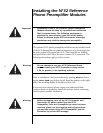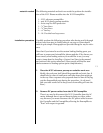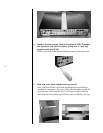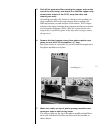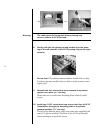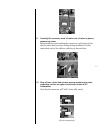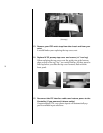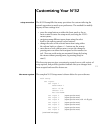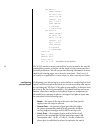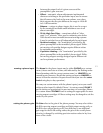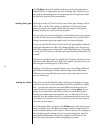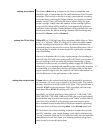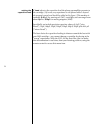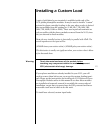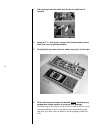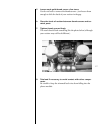
20
Set Phono 1
Name= PH/MC 1
Ph Gain= +60
Gain= +12 dB
Offset= 0.0
Bal= <-0.0->
20Hz HPF=ON
R Load=100
C Load=.01uF
Set Phono 2
Name= PH/MM 2
Ph Gain= +40
Gain= +12 dB
Offset= 0.0
Bal= <-0.0->
20Hz HPF=ON
R Load=47k
C Load=100pF
Teach IR
Mute = -20.0
MaxVol= 80.0
Trig.= 12v,L
Sw 1.07 1.02 (the software version numbers)
The Nº32’s extensive menu system allows you to customize the way the
preamplifier operates, to better suit the needs of your system and your
personal preferences. We will review the following information in more
detail in the coming pages, on an item-by-item basis. (Don’t worry, it
isn’t really as complicated as it seems when you take it one step at a time.)
configuring
phono inputs
Configuring your phono inputs is quite similar to configuring line level
inputs, with the exception that there are several more items that may be
set, including the “Ph Gain” of the phono preamplifier (as distinct from
the Gain of the line level preamplifier), the phono loading, and even a
balance offset that is unique to each phono input, to compensate for
the small errors common in phono cartridges. Each phono input may
be customized in the following ways:
• Name— the name of the input shown in the front panel’s
display when the input is selected.
• Phono Gain— the amount of gain provided for within
the phono preamplifier module itself, generally 40 dB for
moving magnet cartridges and 60 dB for moving coils.
• (Line) Gain— the amount of gain used in the line-level
portion of the preamplifier for that particular input, 0 dB
(attenuation only), +6 dB, +12 dB, or +18 dB; set after the
phono gain is established, and used to optimize the match



